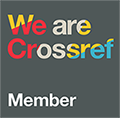Development of the Innovative Work Behavior Scale in Education: A Validity and Reliability Study
DOI:
https://doi.org/10.33308/26674874.2025393887Keywords:
Innovative Work Behavior, Teacher, Scale DevelopmentAbstract
This study includes validity and reliability analyses of the Innovative Work Behavior in Education Scale, developed to measure teachers’ innovative work behavior. The study sample consisted of 261 teachers working in the Pendik district of İstanbul during the 2024-2025 academic year. In the study, experts were consulted for the content and face validity of the measurement tool, and exploratory factor analysis (EFA) was performed for construct validity. As a result of EFA, a structure consisting of three factors and 23 items, explaining 71.4% of the total variance, was obtained. The factors were named “idea generation”, “seeking support for the idea” and “idea implementation”. As a result of the confirmatory factor analysis performed to test the construct validity of the scale, it was seen that the three-factor structure was confirmed. To test the reliability of the scale, the Cronbach alpha internal consistency coefficients were calculated as .89 for the “idea generation” dimension, .95 for “seeking support for the idea” dimension, .95 for the “idea implementation” dimension and .97 for the overall scale. The analysis results for the scale items also showed that all items were sufficiently discriminating. According to these results, it can be said that the Innovative Work Behavior Scale in Education is valid and reliable and can be used to measure the innovative work behaviors of teachers.
Downloads
References
Amabile, T.M., Conti, R., Coon, H., Lazenby, J., & Herron, M. (1996). Assessing the work environment for creativity. Academy of Management Journal, 39(5), 1169-1184. DOI: https://doi.org/10.2307/256995
Amabile. T. M. (1997). Motivating creativity in organizations: On doing what you love and loving what you do. California Management Review, 40(1), 39-58. DOI: https://doi.org/10.2307/41165921
Balkar, B. (2015). The relationships between organizational climate, innovative behavior and job performance of teachers. International Online Journal of Educational Sciences, 7(2), 81-92. DOI: https://doi.org/10.15345/iojes.2015.02.007
Binnewies, C., Ohly, S., & Sonnentag, S. (2007). Taking personal initiative and communicating about ideas: What is important for the creative process and for idea creativity? European Journal of Work and Organizational Psychology, 16(4), 432-455. DOI: https://doi.org/10.1080/13594320701514728
Bos-Nehles, A., Bondarouk, T., & Nijenhuis, K. (2017). Innovative work behaviour in knowledge-intensive public sector organizations: The case of supervisors in the Netherlands fire services. The International Journal of Human Resource Management, 28(2), 379-398. DOI: https://doi.org/10.1080/09585192.2016.1244894
Brown, T. A. (2006). Confirmatory factor analysis for applied research. Guilford Press.
Browne, M. W., & Cudeck, R. (1993). Alternative ways of assessing model fit. In K. A. Bollen & J. S. Long (Eds.), Testing structural equation models (pp.136–162). Sage.
Bryman, A. & Cramer, D. (2001). Quantitative data analysis with SPSS release 10 for windows: A guide for social scientists. Routledge. DOI: https://doi.org/10.4324/9780203471548
Bunce, D., & West, M. (1995). Self perceptions and perceptions of group climate as predictors of individual innovation at work. Applied Psychology, 44(3), 199-215. DOI: https://doi.org/10.1111/j.1464-0597.1995.tb01076.x
Büyüköztürk, Ş. (2011). Sosyal bilimler için veri analizi el kitabı. Pegem A Yayıncılık.
Büyüköztürk, Ş., Kılıç Çakmak, E., Akgün, Ö. E., Karadeniz, Ş., & Demirel, F. (2018). Bilimsel araştırma yöntemleri (24. baskı). Pegem Akademi Yayınları. DOI: https://doi.org/10.14527/9789944919289
Çalışkan, A., Akkoç, İ., & Turunç, Ö. (2019). Yenilikçi davranış: Bir ölçek uyarlama çalışması. Uluslararası İktisadi ve İdari Bilimler Dergisi, 5(1), 94-111. DOI: https://doi.org/10.29131/uiibd.562196
Catio, M. (2019). Analyzing the competency of principals using the framework of the wales national standard for head teacher in boosting teacher‟s innovative behavior. International Journal of Managerial Studies and Research, 7(2), 1-6. DOI: https://doi.org/10.20431/2349-0349.0702001
Çimen, İ., & Yücel, C. (2017). Yenilikçi Davranış Ölçeği (YDÖ): Türk kültürüne uyarlama çalışması. Cumhuriyet Uluslararası Eğitim Dergisi, 6(3), 365-381.
Contreras, F., Espinosal, J., Dornberger, U., & Acosta, Y. A. C. (2017). Leadership and employees‟ innovative work behavior: Test of a mediation and moderation model. Asian Social Science, 13(9), 9–25. DOI: https://doi.org/10.5539/ass.v13n9p9
De Jong, J. P. J., & Den Hartog, D. N. (2007). How leaders influence employees‟ innovative behaviour. European Journal of Innovation Management, 10(1), 41–64. DOI: https://doi.org/10.1108/14601060710720546
De Jong, J. P. J., & Den Hartog, D. N. (2010). Measuring innovative work behaviour. Creativity and Innovation Management, 19(1), 23-36. DOI: https://doi.org/10.1111/j.1467-8691.2010.00547.x
De Jong, J., & Wennekers, S. (2008). Intrapreneurship conceptualizing entrepreneurial employee behaviour. Scales Research Reports H200802, EIM Business and Policy Research.
Dorenbosch, L., Engen, M., & Verhagen, M. (2005). On‐The‐Job innovation: the impact of job design and human resource management through production ownership. Creativity and Innovation Management, 14(2), 129-141. DOI: https://doi.org/10.1111/j.1476-8691.2005.00333.x
Eaude, T. (2011). Compliance or innovation? Enhanced pro-fessionalism as the route to improving learning and teaching. Education Review, 23(2), 49-57.
Eskici, M., & Çayak, S. (2023). The relationship between teachers' technology proficiencies and their levels of integrating technology into their lessons. Journal of Educational Technology & Online Learning, 6(4), 808-821. DOI: https://doi.org/10.31681/jetol.1331971
Etikariena, A., & Widyasari, P. (2020). Quality education to succeed the SDGs among college students through the role of learner empowerment and creative self-efficacy to develop innovative work behavior. E3S Web of Conferences, 211, 01018. DOI: https://doi.org/10.1051/e3sconf/202021101018
Hair, J. F., Black, W. C., Babin, B. J., Anderson, R. E., & Tatham, R. L. (2013). Multivariate data analysis (8th ed.). Pearson Education Limited.
Hakimian, F., Farid, H., Ismail, M.N., & Nair, P.K. (2016) Importance of commitment in encouraging employees’ innovative behaviour. Asia-Pacific Journal of Business Administration, 8, 70-83. DOI: https://doi.org/10.1108/APJBA-06-2015-0054
Harrington, D. (2009). Confirmatory factor analysis. Oxford University Press. DOI: https://doi.org/10.1093/acprof:oso/9780195339888.001.0001
Hoy, W. K., & Miskel, C. G. (2012). Educational administration theory, research and practice (Çev. Ed. Selahattin Turan). Nobel Yayıncılık.
Janssen, O. (2000). Job demands, perceptions of effort–reward fairness and innovative work behaviour. Journal of Occupational and Organizational Psychology, 73(3), 287-302. DOI: https://doi.org/10.1348/096317900167038
Janssen, O. (2003). Innovative behavior and job involvement at the price of conflict and less satisfactory relations with co-workers. Journal of Occupational and Organizational Psychology, 76, 347-364. DOI: https://doi.org/10.1348/096317903769647210
Janssen, O. (2004). How fairness perceptions make innovative behavior more or less stressful. Journal of Organizational Behavior, 25(2), 201-215. DOI: https://doi.org/10.1002/job.238
Kanter, R.M. (1988). When a thousand flowers bloom: Structural, collective, and social conditions for innovation in organizations. Research in Organizational Behavior, 10, 169-211.
Karasar, N. (2007). Bilimsel araştırma yöntemleri (17. baskı). Nobel Yayıncılık.
Khandwalla, P. N. (2006). Tools for enhancing Innovativeness in enterprises. Vikalpa, 31(1), 1-16. DOI: https://doi.org/10.1177/0256090920060101
Khikmah, L. (2019). Teachers‟ creativity in designing learning activities: Sustaining students’ motivation. English Review: Journal of English Education, 7(2), 85-92. DOI: https://doi.org/10.25134/erjee.v7i2.1639
Kline, R. B. (2011). Principles and practice of structural equation modeling (3rd ed.). Guilford Press.
Laursen, K., & Foss, N. J. (2013). Human resource management practices and innovation. Oxford Academic, 25, 505-529. DOI: https://doi.org/10.1093/oxfordhb/9780199694945.013.009
Leong, C. T., & Rasli, A. (2014). The Relationship between innovative work behavior on work role performance: An empirical study. Procedia-Social and Behavioral Sciences, 129, 592-600. DOI: https://doi.org/10.1016/j.sbspro.2014.03.717
Meyers, L.S., Gamst, G., & Guarino, A. (2006). Applied multivariate research: Design and interpretation. Sage.
Mumford, M.D. (2000). Managing creative people: Strategies and tactics for innovation. Human Resource Management Review, 10, 313-351. DOI: https://doi.org/10.1016/S1053-4822(99)00043-1
Nunnally, J.C. (1978). Psychometric theory (2nd Edition). McGraw-Hill.
OECD. (2018). The future of education and skills: Education 2030. OECD. https://www.oecd.org/en/about/directorates/directorate-for-education-and-skills.html
Pala, O., & Turan, N. (2020). Yenilikçi davranış ölçeğinin (YDÖ) Türkiye’ye uyarlama çalışması. Anadolu Üniversitesi Sosyal Bilimler Dergisi, 20(3), 65-80. DOI: https://doi.org/10.18037/ausbd.801853
Paulhus, D. L., & Vazire, S. (2007). The self-report method. In R. W. Robins, R. C. Fraley, and R. F. Krueger (Eds). Handbook of research methods in personality psychology (pp. 224-239). Guilford.
Schleicher, A. (2012). Preparing teachers and developing school leaders for the 21st century: lessons from around the world. OECD Publishing. DOI: https://doi.org/10.1787/9789264174559-en
Scott, S.G., & Bruce, R.A. (1994). Determinants of innovative behavior: a path model of individual innovation in the workplace. Academy of Management Journal, 37(3), 580- 607. DOI: https://doi.org/10.2307/256701
Shear, L., Gallagher, G., & Patel, D. (2011). Evolving educational ecosystems: executive summary of phase 1 ITL research results. Microsoft Corporation.
Sheskin, D. J. (2004). Handbook of parametric and nonparametric statistical procedures (3rd ed.). Chapman & Hall/CRC. DOI: https://doi.org/10.1201/9781420036268
Tabachnick, B.G., & Fidell, L.S. (2007). Using multivariate statistics. Pearson Education. Inc.
Tavşancıl, E. (2010). Tutumların ölçülmesi ve SPSS ile veri analizi. Nobel Yayın Dağıtım.
Tezbaşaran, A. (1996). Likert tipi ölçek geliştirme kılavuzu. Türk Psikologlar Derneği Yayınları.
Thurlings, M., Evers, A. T., & Vermeulen, M. (2015) Toward a model of explaining teachers‟ innovative behavior: A literature review. Review of Educational Research 85(3), 430- 471. DOI: https://doi.org/10.3102/0034654314557949
Töre, E. (2017). Entelektüel sermayenin yenilikçi davranışına etkisinin bilgi paylaşımı, öz yeterlilik ve iç denetim odağı perspektifinden incelenmesi üzerine bir araştırma [Yayımlanmamış doktora tezi]. İstanbul Üniversitesi.
Tura, B., & Akbaşlı, S. (2021). Öğretmen yenilikçiliğini etkileyen faktörler. Uluslararası Temel Eğitim Çalışmaları Dergisi, 2(1), 15-28.
Tura, B., & Akbaşlı, S. (2023). Yenilikçi çalışma davranışı ölçeğinin Türk kültürüne uyarlama çalışması. Mehmet Akif Ersoy Üniversitesi Eğitim Fakültesi Dergisi, 66, 189-212. DOI: https://doi.org/10.21764/maeuefd.1038526
Veenendaal, A., & Bondarouk, T. (2015). Perceptions of HRM and their effect on dimensions of innovative work behaviour: Evidence from a manufacturing firm. Management Revue, 26(2), 138–160. DOI: https://doi.org/10.5771/0935-9915-2015-2-138
Veneziano L., & Hooper J. (1997). A method for quantifying content validity of health-related questionnaires. American Journal of Health Behavior, 21(1), 67-70.
Waheed, A., Xiao-Ming, M., Ahmad, N., & Waheed, S. (2017). Impact of work engagement and innovative work behavior on organizational performance; moderating role of perceived distributive fairness. International Conference on Management Science and Engineering (ICMSE), 127-133. DOI: https://doi.org/10.1109/ICMSE.2017.8574390
Weiss, D. S., & Legrand, C. (2011). Innovative intelligence. Wiley.
West, M. A., & Farr, J. L. (1989). Innovation at work: Psychological perspectives. Social Behaviour, 4(1), 15–30.
West, M.A. (2002). Ideas are tenapenny: It’s teamimplementation not ideageneration that counts. Applied Psychology: An International Review, 51, 411-424. DOI: https://doi.org/10.1111/1464-0597.01006
Whaley, K. W. (1994). Leadership and teacher job satisfaction. NASSP Bulletin, 78(564), 46- 50. DOI: https://doi.org/10.1177/019263659407856410
Woodman, R. W., Sawyer, J. E., & Griffin, R. W. (1993). Toward a theory of organizational creativity. The Academy of Management Review, 18(2), 293–321. DOI: https://doi.org/10.2307/258761
Xerri, M. J., & Brunetto, Y. (2013). Fostering innovative behaviour: The importance of employee commitment and organisational citizenship behaviour. The International Journal of Human Resource Management, 24(16), 3163–3177. DOI: https://doi.org/10.1080/09585192.2013.775033
Yuan, F., & Woodman, R. W. (2010). Innovative behavior in the workplace: The role of performance and image outcome expectations. Academy of Management Journal, 53(2), 323-342. DOI: https://doi.org/10.5465/amj.2010.49388995
Zainal, M., & Matore, M. (2019). Factors influencing teachers‟ innovative behaviour: A systematic review. Creative Education, 10(12), 2869-2886. DOI: https://doi.org/10.4236/ce.2019.1012213
Downloads
Published
How to Cite
Issue
Section
License
Copyright (c) 2025 Aykut Güneş- Murat Gürkan Gülcan

This work is licensed under a Creative Commons Attribution-NonCommercial-NoDerivatives 4.0 International License.
I accept that the Owner of Journal of Education for Life, the Editor, Associate Editors, Reviewers and the Editorial Board cannot be hold responsible regarding the scope, the findings, the discussion and conclusion of the manuscript submitted.
I declare to the editorship of Journal of Education for Life that the manuscript is original and has not been published anywhere else or is not under evaluation process for any other journal.
I approve that I grant Journal of Education for Life as the sole and exclusive right and license to publish for the full legal term of copyright of my manuscript concurring with article 5846 / 22-23-25 while I retain copyright in the work.





